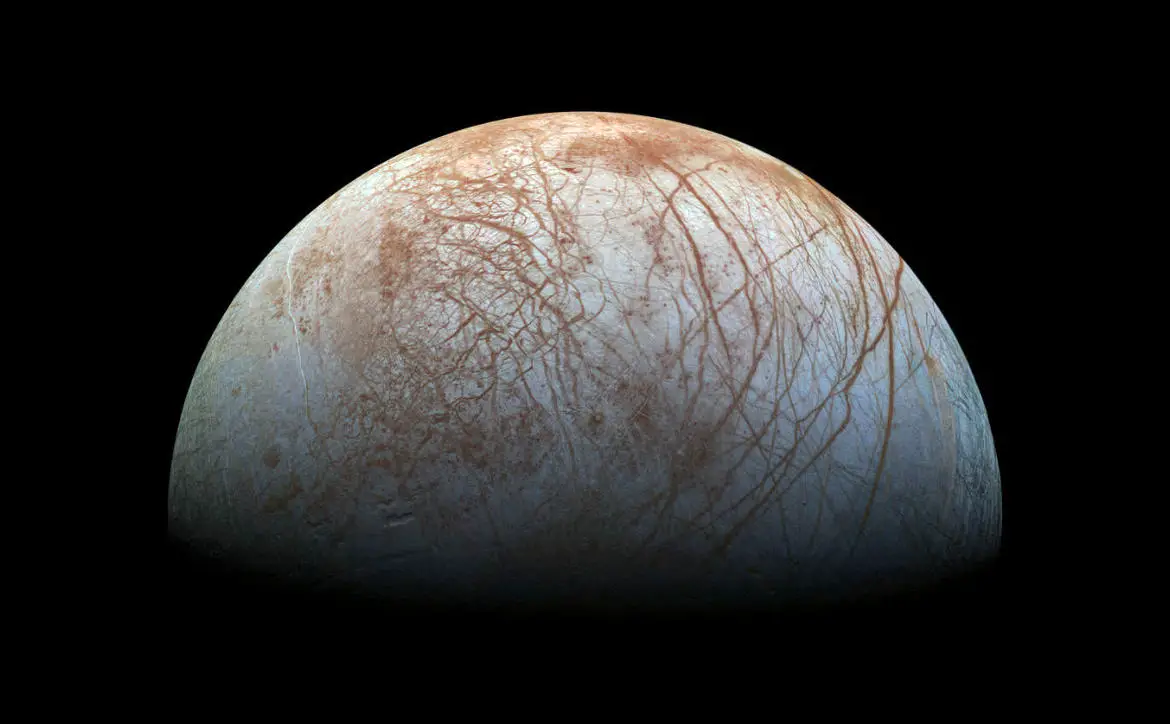Europa has long been a moon of interest for astronomers and scientists alike. Jupiter’s moon is covered with ice, and that’s why this moon has been of interest for so long. Scientists who NASA funds have been researching the effects of minor impacts on the surface of Europa.
Estimated reading time: 2 minutes
The mission has been dubbed the Europa Clipper mission, and part of its goal is to see if it will be possible to embark on a lander mission in the future. Scientists believe that the ocean beneath the ice could be making its way up to the surface, so this is worth investigating further.
New research and modeling estimate how far down that surface is disturbed by the process called “impact gardening.” The work, published July 12 in Nature Astronomy, estimates that the surface of Europa has been churned by small impacts to an average depth of about 12 inches (30 centimeters) over tens of millions of years. And any molecules that might qualify as potential biosignatures, which include chemical signs of life, could be affected at that depth.
That’s because the impacts would churn some material to the surface, where radiation would likely break the bonds of any potential large, delicate molecules generated by biology. Meanwhile, some material on the surface would be pushed downward, where it could mix with the subsurface.
“If we hope to find pristine, chemical biosignatures, we will have to look below the zone where impacts have been gardening,” said lead author Emily Costello, a planetary research scientist at the University of Hawaii at Manoa. “Chemical biosignatures in areas shallower than that zone may have been exposed to destructive radiation.”
SciTechDaily
SciTechDaily has a more in-depth write-up on this story, so we suggest you check out the article over on their website.
It’s always interesting to read about these discoveries and research. I think most of us have a natural curiosity about our universe, and when we get even a sliver of evidence, it’s exciting. Be sure to check out our article on yesterday’s solar storm.
What do you think? Please share your thoughts on any of the social media pages listed below. You can also comment on our MeWe page by joining the MeWe social network.











